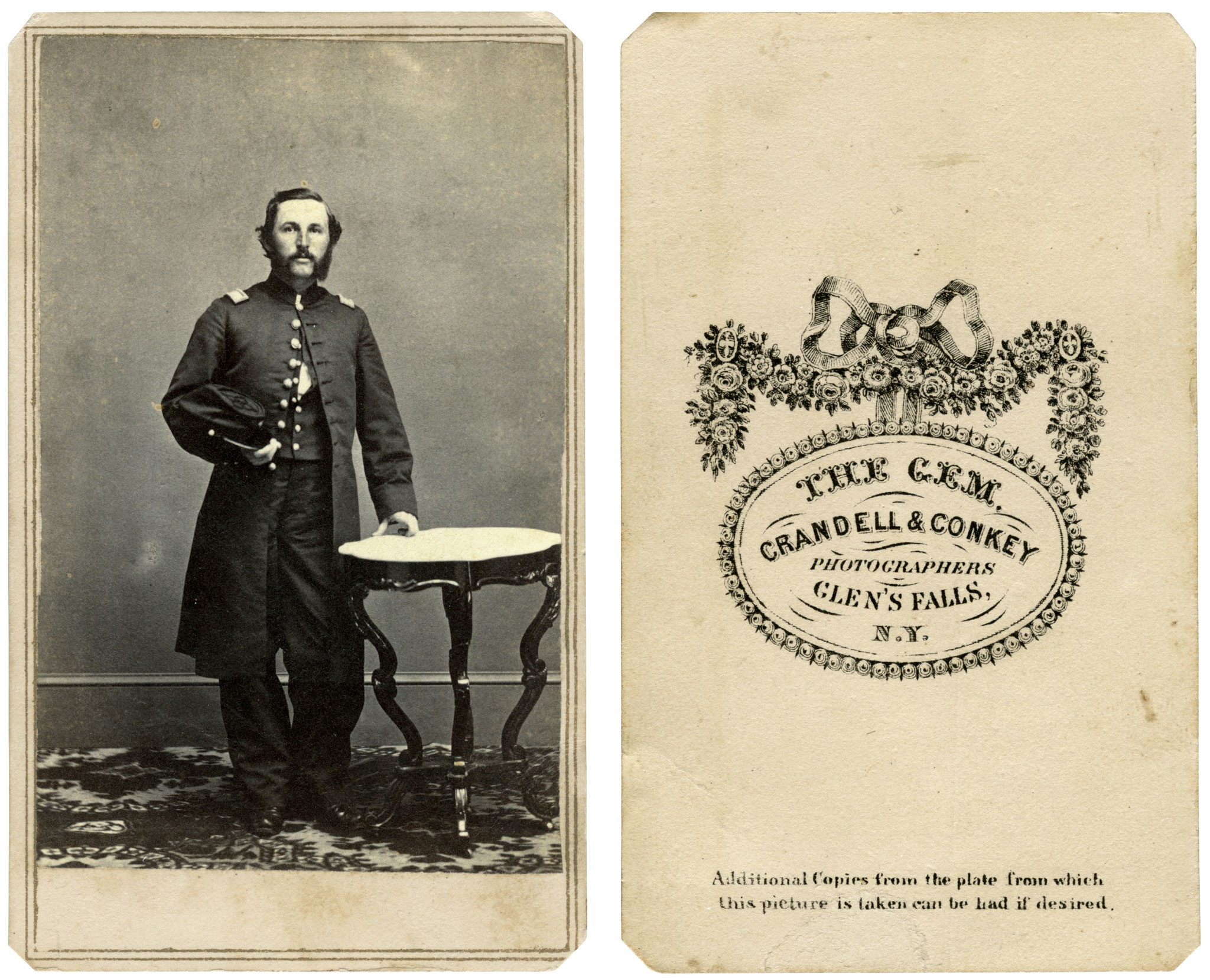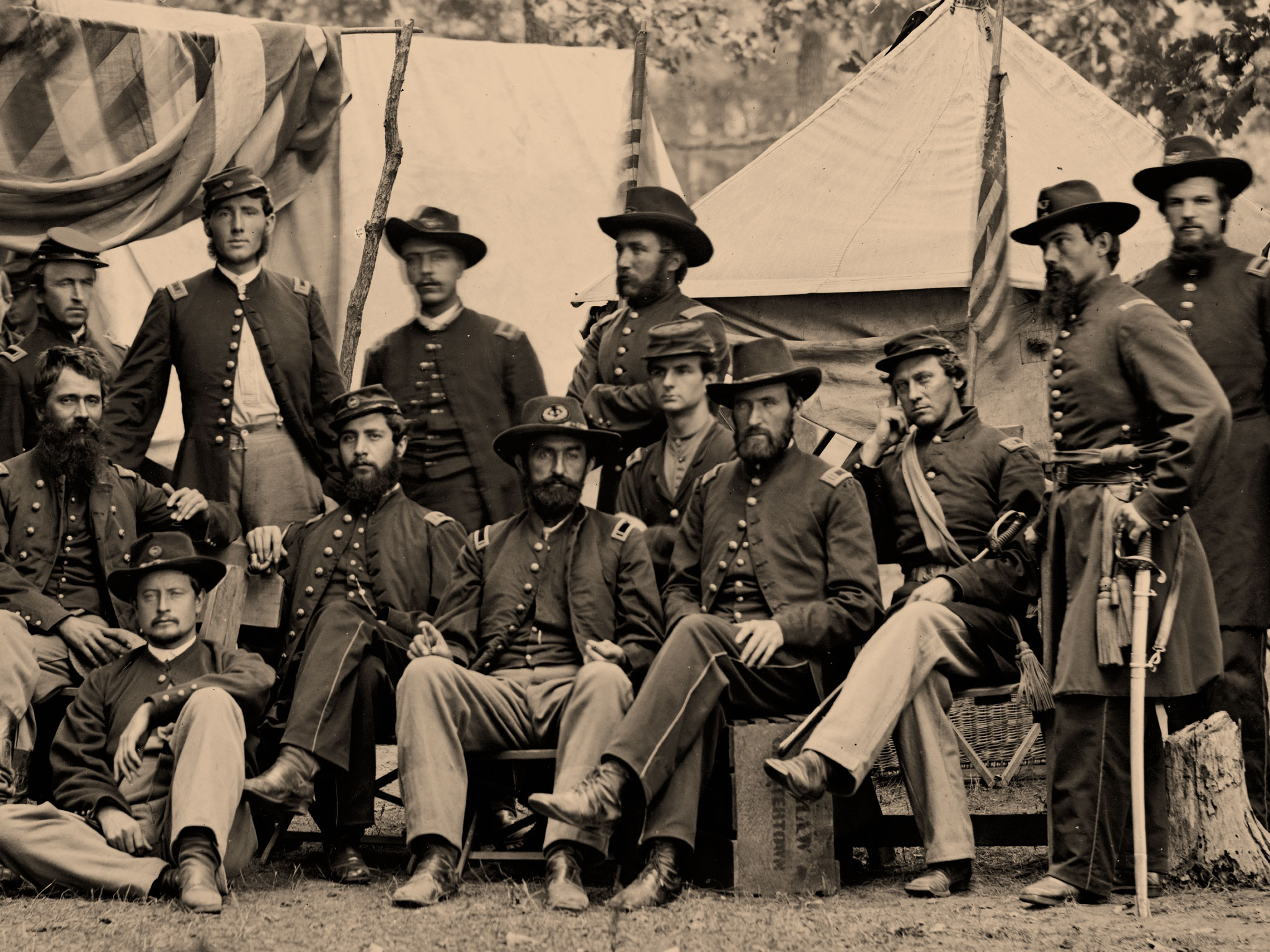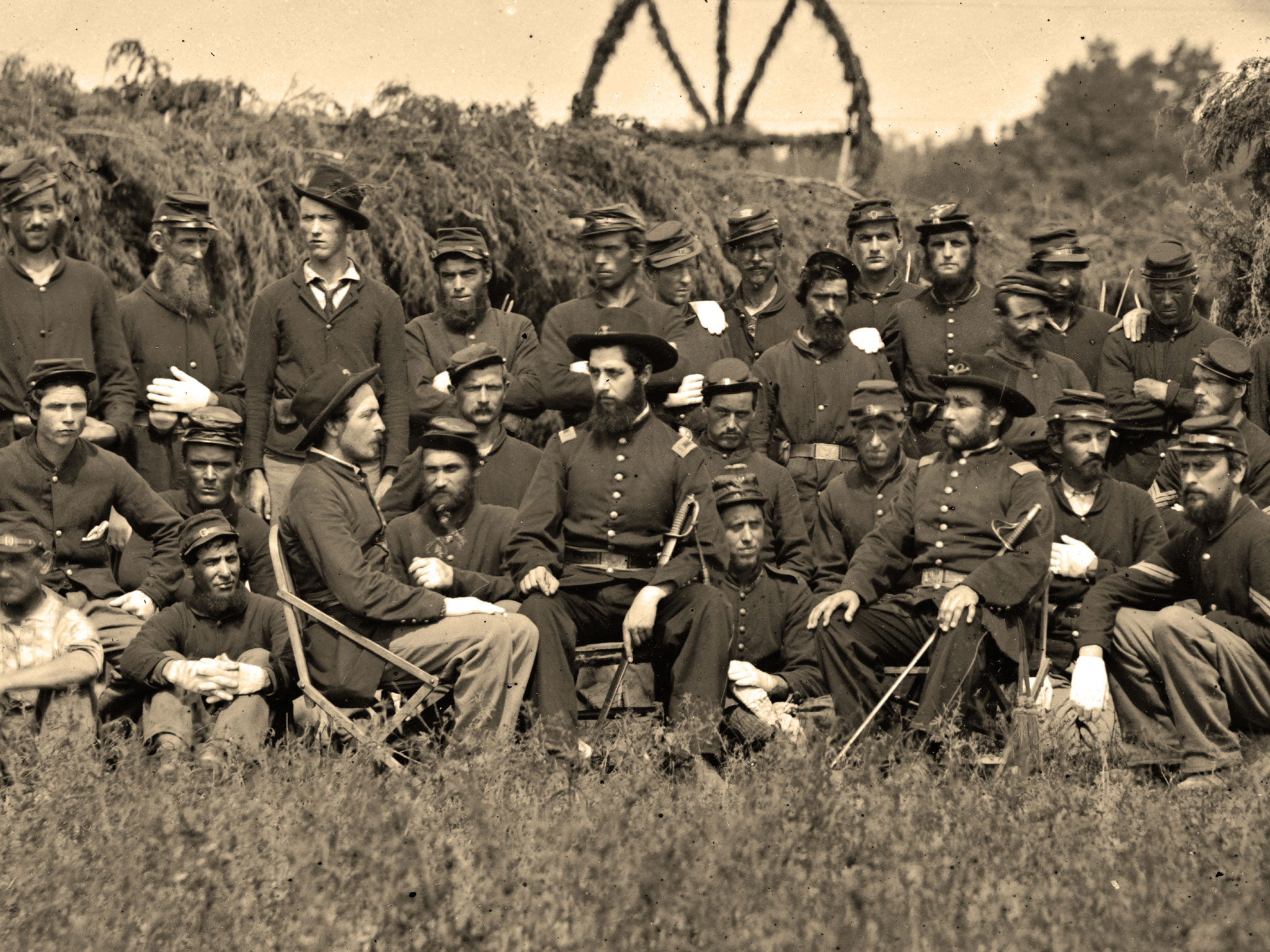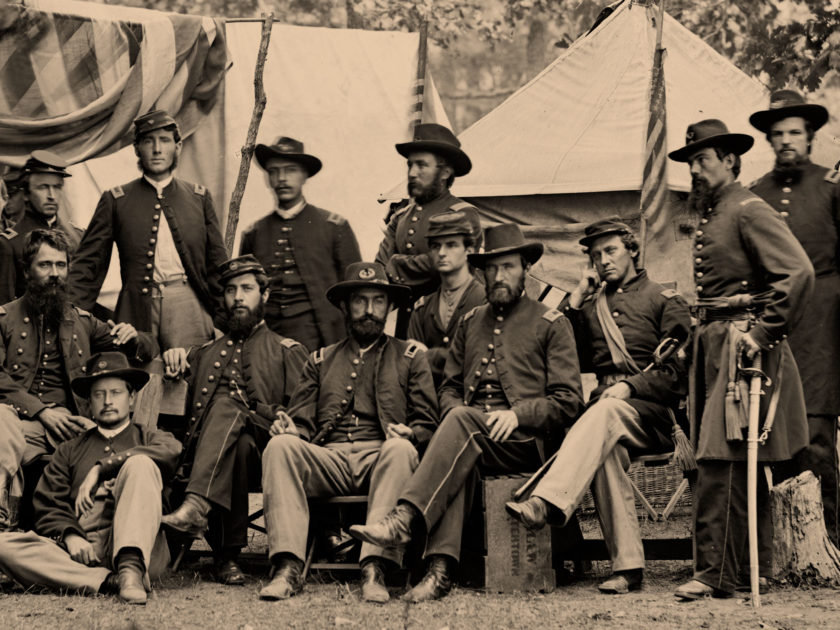By Kurt Luther
The tremendous facility of the Internet to connect photo sleuths with information sources is often mentioned in this column. The most frequently consulted sources generally come in two flavors: online databases of military records that include the National Park Service’s Civil War Soldiers and Sailors System (CWSS), and online portrait galleries such as the Military Order of the Loyal Legion of the United States collection (MOLLUS) maintained by the U.S. Army Military History Institute.
This time around, I have an example of a discovery that draws on two less commonly used, but equally valuable resources, namely fellow collectors and field photography.
About a year ago, I won a Civil War carte de visite in an online auction. The portrait image shows an unidentified junior officer with a mustache and prominent muttonchops. He stands with one hand placed upon a small marble-topped table for support, and the other cradling his cap. His dark military-style vest is visible beneath his partially unbuttoned frock coat.

The likelihood of identifying him was, at first glance, not promising. The image offered few clues to the man’s identity. He carried no weapons, and the insignia on the cap was obscured. The single row of buttons on his coat indicated a lieutenant or captain, but the lighting on his shoulder boards veiled his rank.
In many respects, the subject of this carte de visite is indistinguishable from countless other unknown soldier images found in antique shops, auctions and museums across the country.
But with this particular image, I was struck by the quality of the photographer’s artistry. The portrait is expertly executed, with strong contrast creating a depth and richness that borders on three-dimensional. The elaborate back mark credits the artists as Crandell & Conkey of “The Gem,” a studio in Glens Falls, N.Y. I placed the only bid on the auction, winning it for the princely sum of $25.
Given the dearth of clues, I never expected to identify the man.
In Civil War photo sleuthing, research is never really finished, only interrupted. Fresh clues or a new approach can restart an investigation at any time. In this case, the trail warmed up six months later when, one day, I turned the carte de visite over and viewed the Crandell & Conkey back mark. It called to mind the impressive aesthetics that prompted me to acquire, on a whim, this otherwise typical image. It struck me that I had ignored a valuable clue: the photographers.
I turned to my laptop and searched for the names of the photographers, Isaac Crandell and George Conkey of “The Gem” in Glens Falls. I found an exciting new lead on the mystery man’s identity in the first page of the search results. A fellow collector, none other than MI’s editor and publisher, Ron Coddington, had shared another Crandell & Conkey carte de visite on the photo sharing website Flickr back in 2009. It showed a late war view of Dennis E. Barnes, captain of Company C, 93rd New York Infantry, identified in period ink. In 2014, Coddington had told the story of his death at the Battle of the Wilderness in a post for the New York Times’ Disunion blog. As I looked over the photo of Barnes, I instantly recognized the same artful composition and rich detail that characterized my Crandell & Conkey carte de visite. I now had the name and regiment of an officer who was photographed at the same studio in Glens Falls—an upstate New York town with a Civil War population of about 4,000—as my mystery man. Could both men have served in the same unit?
I began a new search to learn what I could about the 93rd New York Infantry, also known as the “Morgan Rifles.” Once again, I ran across information posted by Coddington who, as it turned out, had been interested in this regiment for some time. In 2008, a year before he posted the Barnes carte de visite, Coddington and a reader of his Faces of War blog had identified three officers in a group portrait of the 93rd. This photo, taken by Timothy O’Sullivan in the field at Bealeton, Va., in August 1863, resides in the Library of Congress collections. As I scanned over the other faces, I noticed a distinctive pair of muttonchops worn by an officer who stood behind Capt. Barnes. This officer bore a strong resemblance to the subject of my carte de visite.

But who was he? Coddington and his reader had only identified three of the men, and they represented different companies in the 93rd, so apparently it was a mixed group. The Library of Congress entry offered no details on the men’s identities, though did provide a new lead—a collection of nearly 30 more group shots of the 93rd at Bealeton! O’Sullivan had separately photographed all 10 companies of the regiment, along with the band and several other groupings. The images represented among the most complete visual records of any Civil War regiment beyond the famed 7th New York State Militia.
If I could find my mystery man in one of the company portraits, I’d be able to narrow down his identity to just a handful of officers.
As I worked through each photo systematically, starting with Company A, I noticed that many of the officers wore caps with dark-colored decorative braiding on their tops and unusually small hunting horn insignias on their fronts. The cap cradled by my mystery man had similar markings. This was promising secondary evidence, and I continued the search with increased confidence.
My optimism faded however, as I scanned the final images in the O’Sullivan group. Where was the man with the muttonchops? Had I missed him? Had he sat out the other portraits, leaving us with a single mysterious appearance? Finally, in the last pair of photos in the set—two group shots of Company K—I spotted him. Seated casually on a chair in the front and center of the company, he gazes off into the distance, a cavalry sword balanced in the crook of one elbow and the straps of a second lieutenant on his shoulders.


Who was the second lieutenant in Company K of the 93rd in August 1863? A quick search of American Civil War Research Database (HDS) provided the answer: William Ball held the position from July 1862 to November 1863, when he was promoted to first lieutenant of Company H. Ball, who lived in Troy, N.Y., about 50 miles south of Glens Falls, joined the regiment in November 1861 as first sergeant of Company K. He left the army in November 1864, having survived the carnage at the Wilderness that claimed the life of Capt. Barnes and nearly 50 other men of the regiment. William F. Fox, in his treatise “Regimental Losses in the American Civil War,” listed the 93rd as one of the Three Hundred Fighting Regiments in the Union Army.
Ball’s return to civilian life was short lived. He died four years later after he mustered from the army, and was buried in Troy. He was 42.
HDS offered one more clue: a period identified carte de visite of Ball from a collection in the New York State Military Museum. In this vignette view, Ball is pictured with his first lieutenant’s straps, dating it between late 1863 and 1864. I felt confident in my sleuthing even without this photo confirmation, but having it was icing on the cake.
What stands out about this particular inquiry is the variety of different sources needed to solve the mystery. The usual suspects such as HDS were present and essential. But the key breakthroughs came from unexpected sources, including photos and comments posted half a decade earlier by a fellow collector, and a set of field photos from the Library of Congress whose subjects are largely unidentified. This investigation also underscores the importance of sleuths and collectors sharing their collections, discussions and annotations online with the rest of the world. Often, as demonstrated here, these efforts can pay off years later in unforeseen ways.
The case of Lt. Ball reminds us that even Civil War portraits short on clues can eventually give up their secrets provided we practice patience and persistence enough to keep sleuthing.
We encourage you to pick up the torch to continue this investigation and, as always, submit other photo mysteries to be investigated as well as summaries of your best success stories to MI via email or mail. Please also check out our Facebook page, Civil War Photo Sleuth, to continue the discussion online.
Kurt Luther is an assistant professor of computer science at Virginia Tech. He writes and speaks about ways that technology can support historical research, education and preservation.

